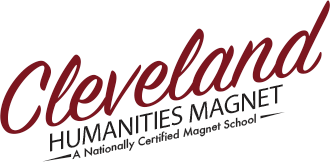Unit 3: Mexican Culture, History, and Geography
Neither Victory Nor Defeat: The Role of Cultural and Geographic Environments in the Birth of the Mestizo Republic
In the first part of the Mexico unit, we shift our study from a small-scale folk society to a more complex one as humans develop their ability to control their environment. You will learn that once humans understand how to produce their own food and domesticate animals everything in their society changes. For example, the Mexica society, originally one of hunter-gatherers, began to evolve a more complex culture when they transformed Lake Texcoco into the great agricultural city of Tenochtitlan.
In the second part of the unit, we introduce the Spanish Conquest where two advanced (for that time period) cultures come into conflict. You will evaluate how, despite both being examples of more developed societies, the outcome of the conquest isdomination by the Spaniards. According to Guns, Germs, and Steel by Jared Diamond, this is because the geographic and environmental conditions of Spain provided distinct advantages. Nevertheless, the Spaniards were unable to duplicate their culture in the New World and ultimately there was a synthesis of two cultures, becoming the Mexico we know today. You will apply this theme of conflict and synthesis to Rudolfo Anaya’s novel, Bless Me, Ultima, in which the protagonist is a descendant of this legacy.
English
The Mexico unit begins with a study of myths and legends that allow students to understand the rich origins of modern day Mexican culture. This culture comes to life in the coming of age novel, Bless Me, Ultima, where the young protagonist faces some significant life decisions as he is caught between two conflicting cultures.
LEARN MORE ABOUT THIS UNIT
Key Concepts:
Myths
Legends
Themes of novel
Character Analysis
Irony
Comic Relief
Literacy Devices
Readings:
“Tales About Beginnings,” adapted handout from World Literature
“Corn Mother,” retold from nineteenth-century sources
“La Llorona,” adapted handout
“Vaquero,” Joaquin Miller
Anaya, Rudolfo. Bless Me, Ultima. New York: Warner Books, 1972. Print.
Videos:
Mi Familia
Bless Me, Ultima
Social Institutions
For this unit, students will gain the historical context of the Mexica people from the creation of the grand city of Tenochtitlan up to the conquest by the Spanish, which consequently gave birth to the modern-day Mexican people and culture.
LEARN MORE ABOUT THIS UNIT
Key Concepts:
Domestication
Synthesis
Conquest
Castas
Readings:
Adapted handouts from Guns, Germs, and Steel, Jared Diamond
Modern History Sourcebook Hernan Cortes: from Second Letter to Charles V, 1520
Videos:
Guns, Germs, and Steel (National Geographic) Part II
Mexican Prehispanic Cultures
Conquistadores (PBS)
Art and Religion
In the Mexico unit, students examine the events that allowed the Mexicas to evolve from an animistic to a more complex theocratic society. The class emphasizes the significance of their polytheistic religion, by surveying the Mexica Calendrics, Astronomy/Astrology and Arts that highlight their religious way of life, which met a sad fate with Spanish arrival. Students will study the blending of these two cultures by examining the changes within art that was impacted by the conquest.
LEARN MORE ABOUT THIS UNIT
Key Concepts:
Sacrifice
The Priesthood
Calendrics
Mexica Artistic Achievements
Environmental Science
The influence of agriculture on the development of society is the focus of the science curriculum in Unit 3. Students learn how humans began to manipulate their environment through domestication. In order to understand this concept students learn the fundamentals of genetics to be able to distinguish between domestication and natural selection.
LEARN MORE ABOUT THIS UNIT
Readings:
Selected readings from Guns, Germs, and Steel, Jared Diamond
- How to Make an Almond
- Apples or Indians
- Zebras and Unhappy Marriages
- Spacious Skies and Tilted Axes
- Lethal Gift of Livestock


